What stays with you for a lifetime are the experiences you had effortlessly. These moments don't require struggle or sacrifice; they come naturally. Nature presents no challenge—it simply sets the stage for awe-inspiring displays of her boundless versatility. And all this unfolds spontaneously, without effort, right before your eyes.
Why not be part of these magical phenomena at least once in your lifetime? Take that journey down a glorious path—one that will not only leave you mesmerized but also enlightened.
1. Northern lights |
INTRO
The aurora borealis, or northern lights, is a breathtaking phenomenon—like a celestial dance lighting up the night sky. It’s one of those experiences best witnessed in person, as no description or HD image can truly capture its magic. Ironically, it’s the sun that makes this stunning light show possible. When charged particles emitted by the sun enter Earth’s magnetic field, they collide with molecules in the atmosphere, and that collision creates the vibrant, shifting lights we see in the aurora.
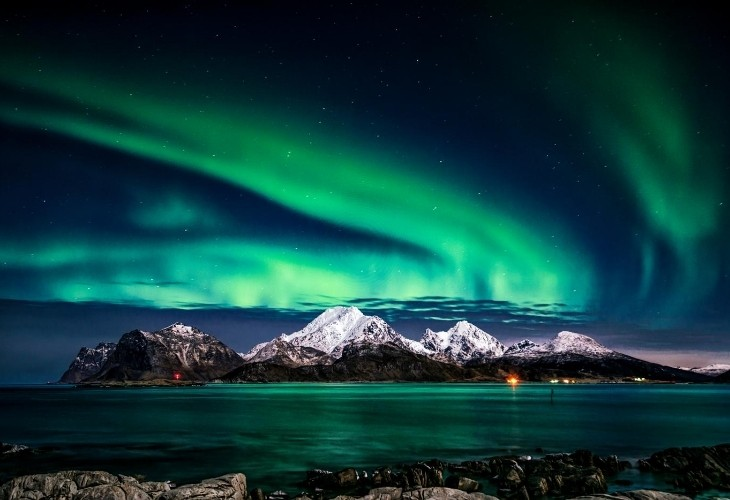
FACTS
The sky must be pitch dark and clear—these are the two most important factors for seeing the lights. Summer nights are shorter, so it is recommended to visit between December and March for better sightings, as the nights are longer. However, longer nights do not always guarantee success. The March and September equinoxes are believed to be peak times for viewing the northern lights, as solar activity tends to be higher during these periods.
WHERE TO FIND IT
As darkness falls, your anticipation to witness the glorious lights begins to build, and they could appear at any time as long as the sky remains dark and clear. Prepare yourself for a long night under the stars, as patience is key—this is truly a once-in-a-lifetime experience. It's easier to travel to the northern hemisphere for this phenomenon than to the south. Therefore, let's focus on northern countries closer to the Arctic, such as Alaska, Canada, Finland, Norway, Sweden, Greenland, and Iceland, where you can chase the northern lights. (Read more about where to sight the northern lights in Finland.)
2. Bioluminescence |
INTRO
This is when the seashore becomes illuminated. Imagine the incredible glowing waves slowly washing up on the shoreline as you stand there, marveling at the blue light emitted by some mysterious activity beneath the sea. These rare natural occurrences happen in various places but are not easily accessible for everyone to witness. It's like a secret, surreal dance of elusive beings. To witness this phenomenon in person is truly a hair-raising experience, isn't it?
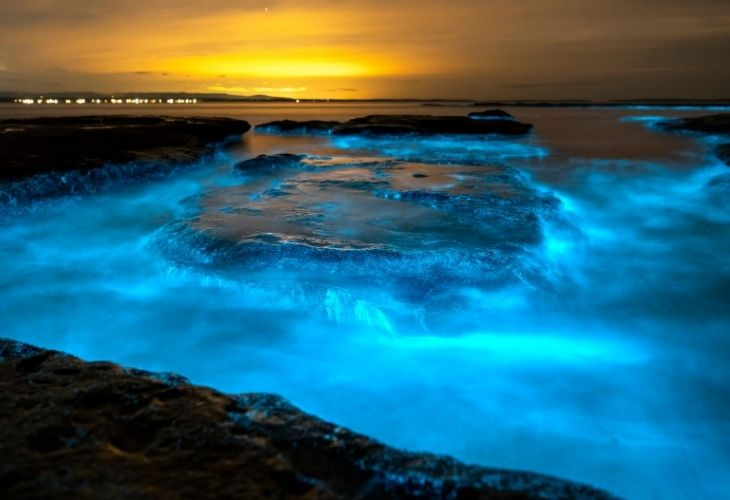
FACTS
This glow in the water is called Bioluminescence, the emission of light by an organism through a chemical reaction (chemiluminescence). The bioluminescent species especially bound to the sea include bacteria, algae, fish, jellies and planktons. Some land-based bioluminescent organisms are fireflies and fungi. Organisms can luminesce when they are distressed it can be categorized often as defence tactics or a mode of communication. Planktons scientifically known as dinoflagellate gather energy from the sun and triggers a blue glow when it senses movement in the water. Fluctuations in the marine habitat, such as a drop in salinity, can induce the glow in bioluminescent algae.
WHERE TO FIND IT
Beaches of Australia, Jamaica, Beigan Island in Taiwan, Halong Bay in Vietnam, Isla de Vieques in Puerto Rico, California, Florida in the US, Norfolk in the United Kingdom, Krabi in Thailand, Bali in Indonesia
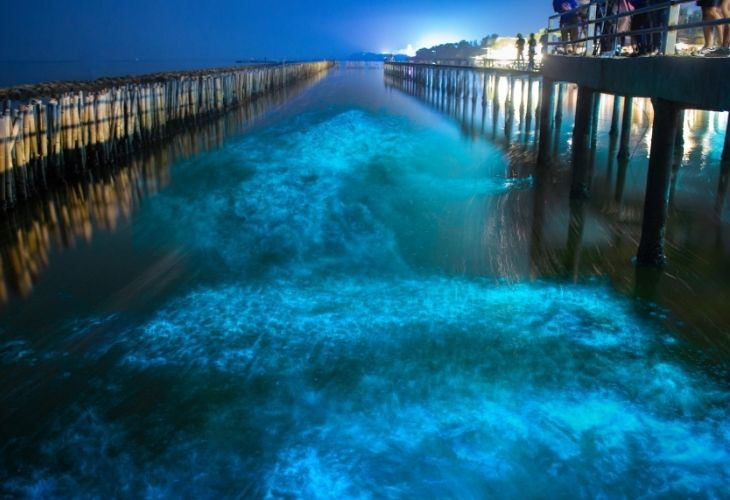
But our favourite is Maldives - Vaadhoo and Mudhdhoo Islands. Between July and December, the islands glow in the dark, and it might well be the most fantastical water & light show display on Earth. It is unpredictable and occurs only on moonless nights but when it does, then walking the shallow seas in a pleasant holiday mood with the luxurious secluded backdrop Maldives provides make the show much more amazing! (read more on Where to stay in Vaadhoo and Mudhdhoo Islands)
3. Whale Watching |
INTRO
These are one of those things you will do in your life that will leave you stunned and totally mesmerized. The first sight of these majestic whales and the display of their sheer power is unparallel, but then they are, of course, the biggest creatures on earth. They can roam everywhere in the ocean; they are at the top of the food chain, and they are greatly instrumental in processing carbon dioxide from the atmosphere that makes them the right hand of Poseidon. They can be playful and curious too, same as you, when you look at them, they look at you and sometimes come closer to meet.
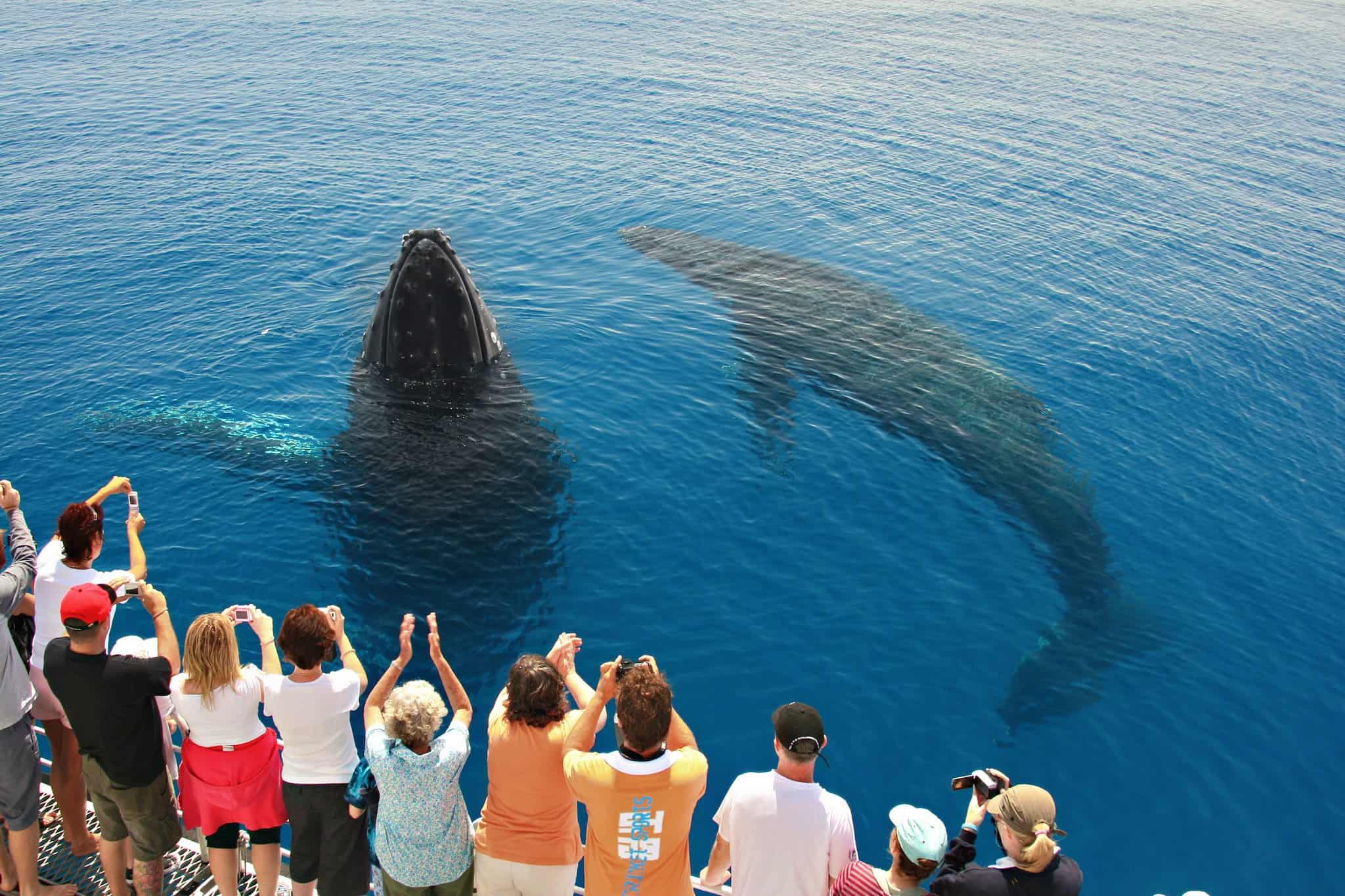
FACTS
Whales are warm-blooded mammals that breathe air. They can stay underwater for up to 90 minutes. Blue whales, the largest of their kind, can weigh an astonishing 200 tons and reach lengths of over 100 feet. While whales typically inhabit the colder waters of the Northern and Southern Hemispheres, they prefer the warmer seas near the equator for giving birth.
WHERE TO FIND IT
It’s advisable to take the whole-day whale-watching tours. You can go far, have more cruise time, and increase your chances of sightings, though sightings are much higher in the early morning.
Canada Strait of Juan de Fuca and Georgia Strait in Pacific coast for Killer whales - between May and October The Gulf of St. Lawrence in Atlantic Coast - Beluga, Minke, Humpback, Fin, Blue and Sperm Whales USA Big Sur, Monterey Bay in California for Humpback, Blue, and Gray Whales – all year round Long Island in New York for Fin, Humpback, North Atlantic Right, Minke, Sperm, Blue, and Sei Whales - July to Early September Maui, Hawaii for Humpback Whales - December to April Oregon, Virginia, Maine, Massachusetts, Florida also have whale watching tours. Alaska Glacier Bay for Humpback, Minke, Orca and Blue Whales - June to August Kodiak Island for Gray Whales, Fin and Humpback Whales - June to November Juneau for Humpback and Orcas - April to November Europe Iceland for Minke whales and killer whales Coast of Portugal for Blue, Finback, and Sperm whales - May through October |
Conservation
While you watch them, remember they are vital beings for the habitat. They are fast becoming endangered because of loss of habitat, rampant killings, and the shipping industry. They need our protection, do what it takes to protect them.
4. African Wildlife Safari |
INTRO
Dressed in muted colors to blend in, you set off on a safari, enjoying a front-row seat to the spectacular show of the wild. A seamless landscape of rivers, lakes, mountains, and endless savannah surrounds you. It’s a joy for the soul to see wild animals in their natural habitat—some grazing in the pastures, others engaged in friendly tussles, some basking in the sun, some dipping into the lake, and others running from predators. The unscripted drama unfolding, though often gory, is simply the food chain in action. You may witness the hunt if you're patient enough and the timing is right. As Hemingway once wrote, 'There can be no greater sight than that of a full-maned lion on the plains of Africa.' The 'Big Five'—Lion, Elephant, Leopard, Black or White Rhino, and Cape Buffalo—are the crowd-pullers, drawing gasps of awe from onlookers. However, Africa's fauna offers much more than just the Big Five, with various species that will keep you enthralled.
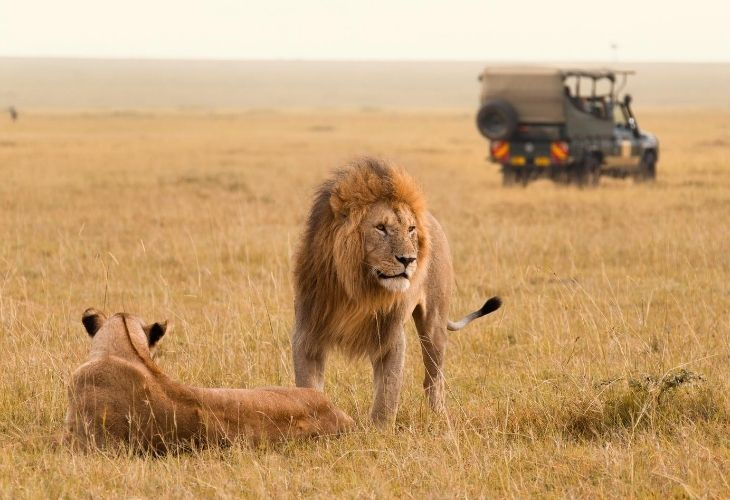
FACTS
Temperatures can vary during a safari. For instance, Masai Mara is cooler than you might expect, with daytime temperatures reaching a maximum of 30°C and nighttime lows dropping to as low as 10°C. Choose your clothing accordingly, and a hat is an essential accessory. The animals typically don’t pay much attention to you, as they only perceive the size of the vehicle. Elephants, lions, leopards, and many other animals make daily appearances, even in the most remote corners of Africa.
WHERE TO FIND IT
Kenya - Amboseli, Masai Mara, Samburu, Tsavo, Laikipia Plateau, Lake Naivasha, Lake Nakuru. The Great Migration, which starts in June/July, is the high season for safari. Millions of wildebeest, gazelle, eland, zebra, and impala migrate from the Serengeti in Tanzania to the Masai Mara in Kenya in search of water and grazing land.
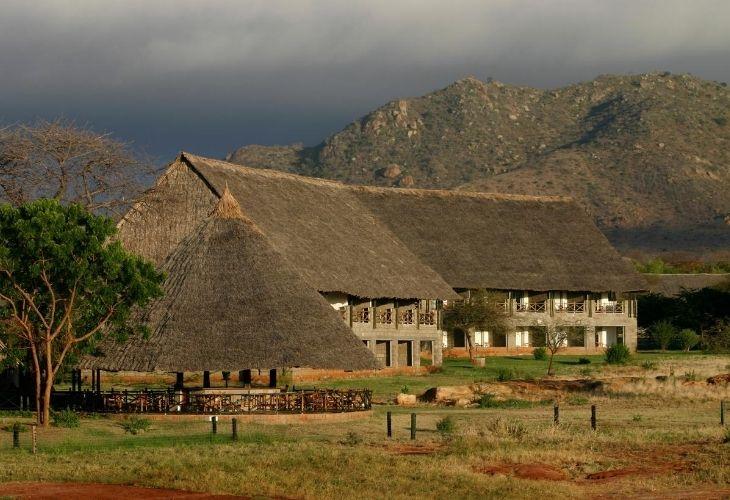
Tanzania - Serengeti, Selous, Arusha, Ngorongoro Crater, Tarangire and Ruaha. Jun-Oct is ideal months to go when the rains are over, roads are dry, and the climate is cooler.
South Africa - Kruger National Park, Madikwe Game Reserve, Mala Mala or Sabi Sand or Timbavati private reserves. May to September is best to enjoy Kruger Park, Gauteng, Limpopo in the northern part.
Botswana - Kalahari Reserve, Makgadikgadi and Chobe National Park. April to September is a particularly good time to visit Botswana.
Zambia – is still an undiscovered wilderness that is unspoiled. August to October are the best months for wildlife viewing in North and Southern Luangwa, Kafue, Zambezi National Park, Lochinvar and Liuwa.
Besides, there is Namibia, Zimbabwe, Malawi for an even more raw landscape.

5. Uluru Mountain |
INTRO
In the southern part of the Northern Territory in central Australia lies the majestic sandstone rock formation, Uluru. It is truly humbling to see this mystical mountain rising from the earth, its powerful, eternal body painted in shades of red, standing guard over the land and sanctifying everything around it. Its stunning color changes depending on the time of day and season. Uluru is composed of sandstone and minerals like feldspar, which emit a reddish glow during sunrise and sunset. But Uluru is more than just a geological feature; it is a sacred place for Indigenous Australians. According to the Pitjantjatjara Anangu, the world was once unformed and featureless until the ancestral beings emerged at this site during "Dreamtime." It was here that they created Uluru, and from this foundation, they went on to create all living species and forms on land. (Aboriginal Dreamtime refers to the process of creation when all gods and ancestors came together to form everything. The Aboriginal Anangu believe they can communicate with Dreamtime and receive blessings from their ancestors simply by touching the rocks. Uluru has become a pilgrimage site for people from various cultures seeking enlightenment.)

FACTS
Uluru is an inselberg, meaning an isolated mountain that rises unusually from a flat or sloping surface. It is the second-largest monolith in the world, formed over 600 million years ago. Standing at 348 meters high, it has a circumference of 9.4 kilometers and extends 2.5 kilometers underground. Surrounding the mountain are numerous springs, waterholes, rock caves, and ancient paintings. Notable sites include Mutitjulu Waterhole, Kulpi Mutitjulu (Mutitjulu Cave), Taputji, Tjukatjapi, Pulari, Mala Puta, Kantju Gorge, Warayuki, and Kuniya Piti. Approximately 25 kilometers to the west lies Kata Tjuta, also known as the Olgas. Kata Tjuta is a rock formation made up of 36 different mountaintops. The name Uluru itself is ancient and doesn't have one specific meaning, but one interpretation is 'place of many heads,' referencing the ancestors who once inhabited the land.
Uluru has a modern name called - 'Ayers Rock”.
SPIRITUALITY
The rock is revered as one of the holy creations of the Eternals. Ancient paintings found throughout its caves and crevices depict countless petroglyphs that tell the story of the ancestors. The proximity of the Mutitjulu settlement to the rock signifies the deep spiritual connection between the local people and Uluru.
Indigenous people believe that those who visit Uluru, experience its mystery, and understand its true essence are the ones destined to change the world. This is a place to receive what the Sacred has to offer—a place that transforms people. Visiting this heart of Australia is a once-in-a-lifetime experience.

A word for the wise: please don’t climb it. It’s a sacred mountain, and many come there for pilgrimage. We should respect that and not make a sport out of it. Those who want to prove their physical mettle kindly do it somewhere else.
Note: Latest news on Uluru Mountain - in a landmark decision favouring the aboriginals, climbing has been banned from 26 October 2019.
.png)









